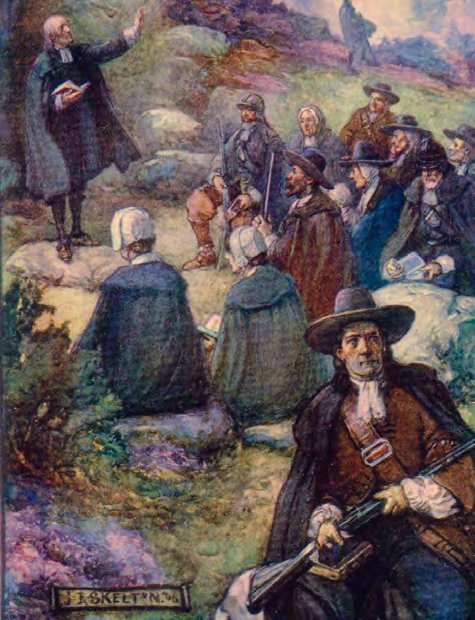When Scottish presbyterians looked back from the vantagepoint of the 18th century on the reigns of Charles II (1660-85) and James VII (1685-89), they tended to view the entire period as one of brutal repression against their co-religionists. And, as they catalogued the litany of atrocities they considered to have been visited on presbyterians, they also developed a stark and emotive phrase to describe it all: the ‘killing time’.
The ‘killing time’ is an elastic idea. Sometimes it is applied to the entire period of anti-presbyterian persecution from the restoration of Charles II in 1660 to the revolution of 1688-91. The foundation of this was the government’s decision in 1662 to reimpose an episcopalian structure of Church government, meaning that the Church was to be controlled by crown-appointed bishops. A large number of Scots, particularly in the south-west, found this intolerable, and so began organising illegal, presbyterian prayer-meetings known as ‘conventicles’, often presided over by erstwhile ministers who had left the established Church in protest.
The government responded by breaking up prayer meetings where possible and passing increasingly restrictive laws against nonconformists, including the notorious ‘Clanking Act’ of 1670, which threatened death on anybody officiating at a conventicle. The culmination of this repression was the deployment of the ‘highland host’, a roughly 8,000-strong force of irregular troops sent to quarter in the south-west in the early months of 1678 with the express purpose of terrorising dissidents into submission. This approach was leavened by occasional efforts to reincorporate any presbyterians, particular among the ministry, willing to accept royal authority over the Church, most notably in the ‘indulgences’ passed in 1669 and 1672. In general, however, sa repression was the order of the day.

Depiction of a conventicle in progress, from H E Marshall’s Scotland’s Story, published in 1906
Leggete l'articolo completo e molti altri in questo numero di
History Scotland
Opzioni di acquisto di seguito
Se il problema è vostro,
Accesso per leggere subito l'articolo completo.
Singolo numero digitale
Sep - Oct 2020
Questo numero e altri numeri arretrati non sono inclusi in un nuovo
abbonamento. Gli abbonamenti comprendono l'ultimo numero regolare e i nuovi numeri pubblicati durante l'abbonamento. History Scotland